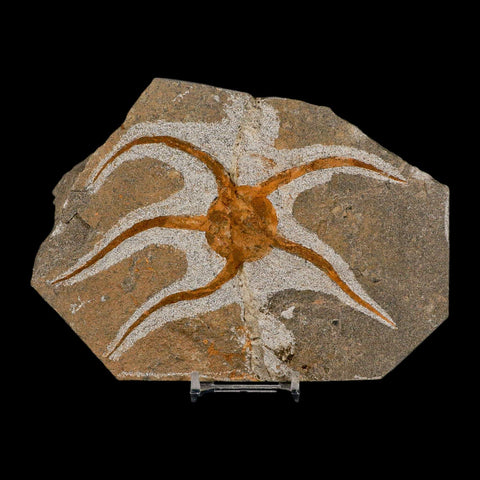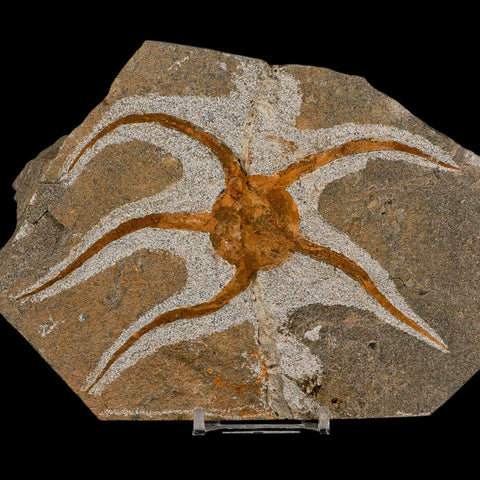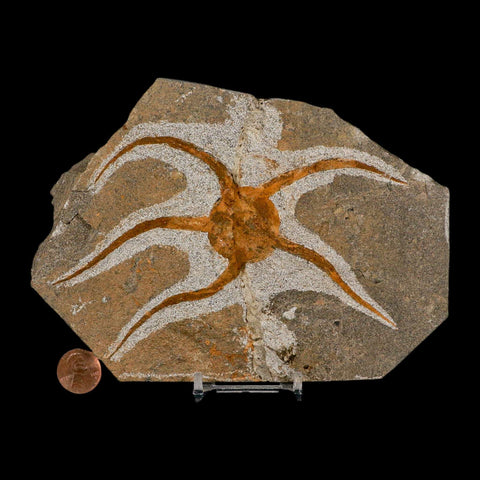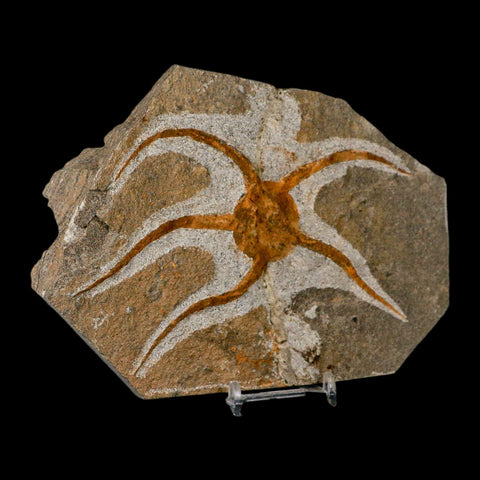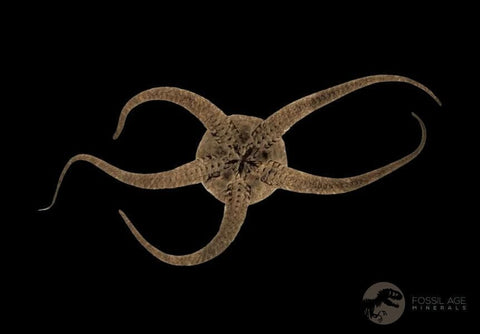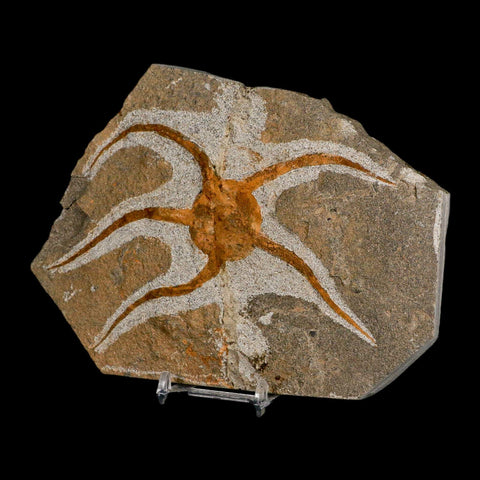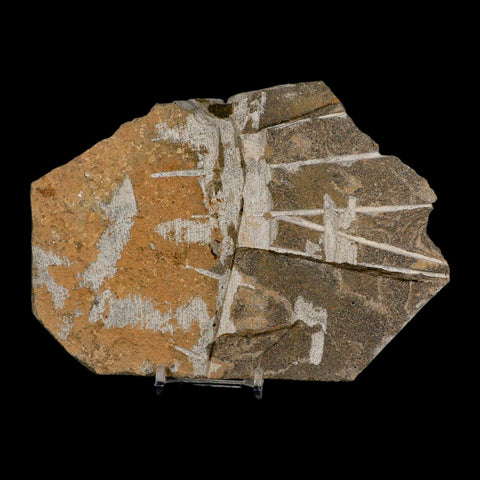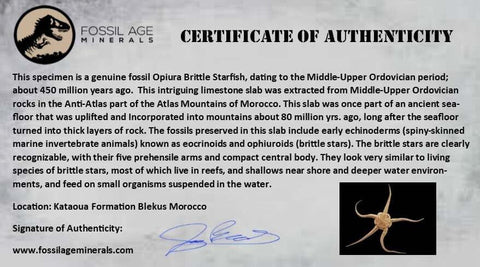5.5" Brittle Star Ophiura Sp Starfish Fossil Ordovician Age Morocco COA & Stand
Location: Kataoua Formation, Blekus, Morocco
Weight: 1 Pound 3.2 Ounces
Dimension: 6.9 Inches Long, 6.7 Inches Wide, 0.8 Inches Thick (Plate)
Starfish Dimensions: 5.5 Inches Long, 3.6 Inches Wide
Comes with a Certificate of Authenticity.
Comes with a Free Stand.
The item pictured is the one you will receive.
Brittlestar Ophiura Sp
This intriguing limestone slab was extracted from Middle-Upper Ordovician (about 450 million years old) rocks in the Anti-Atlas part of the Atlas Mountains of Morocco. This slab was once part of an ancient seafloor that was uplifted and incorporated into mountains about 80 million years ago, long after the seafloor turned into thick layers of rock.
This striking slab showcases ancient echinoderm fossils, including echinoids and nimble ophiuroids—better known as brittle stars. With five grasping arms and a tight central body, these brittle stars mirror their modern-day cousins, thriving across reef habitats, shallow coasts, and deeper waters. They skillfully capture tiny organisms drifting in the water, a timeless survival tactic etched in stone.
Eocrinoids are unique creatures featuring long, slender, tapering stems with groups of arm-like appendages at the opposite end. These fossils likely represent the Eocrinoid Ascocystites, which fed by filtering microorganisms directly from the water using their appendages. Although named similarly, eocrinoids are not related to crinoids (sea lilies) and show several distinct anatomical differences from both ancient and modern crinoids. Their extended stems, like those of many fossil crinoids, enabled them to anchor to solid surfaces and elevate themselves above the seafloor.
There appear to be several larger individuals along with several much smaller ones. Those smaller animals may be juveniles of the larger form or a different species. Do you notice how the smaller individuals often seem to be in close contact with the brittle stars? We are often led to wonder whether the brittle stars were feeding on the smaller echinoids.

Please be aware of the nature of fossils:
Being buried under the ground for millions of years under tons of pressure tends to be rough. No fossil comes out of the ground whole and perfect. Most fossils have undergone some restoration, while others are altered by man simply to enhance their presentation in different ways. The workers in Morocco do a very professional job of unearthing and preserving these natural treasures. These are part of the natural beauty of the fossil and are not considered defects.


